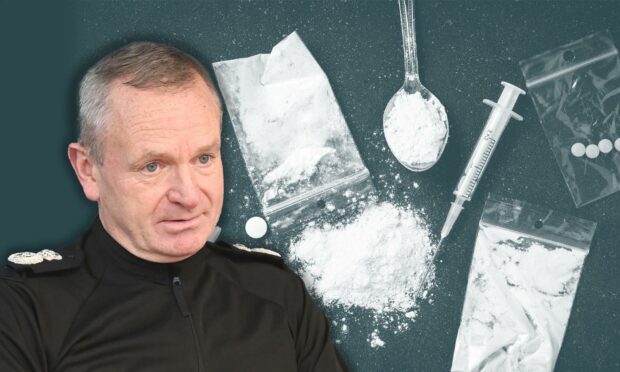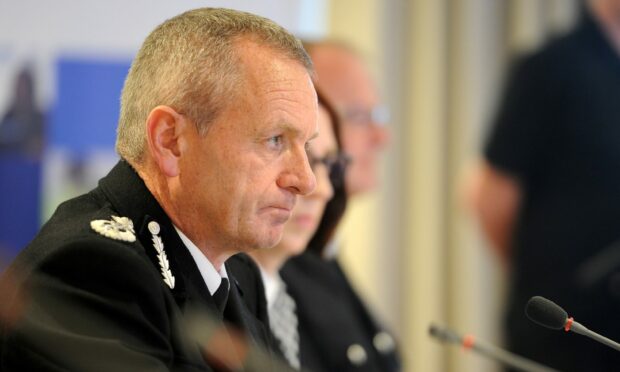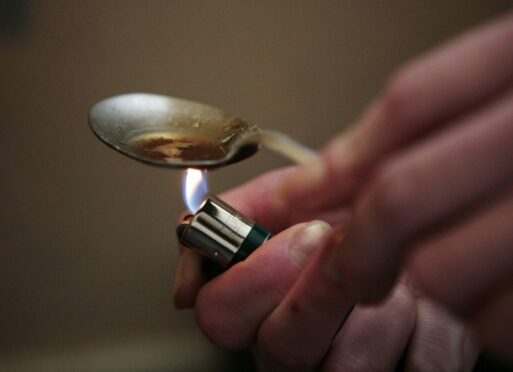Police Scotland’s chief constable has said there needs to be “stronger evidence” that safe drug consumption rooms are effective before he can support them.
Chief Constable Iain Livingstone told the Press & Journal that while he believes it is important to “keep an open mind” around potential solutions to Scotland’s rising drug deaths figures he doesn’t view the proposals as a “silver bullet”.
He also spoke about the police’s role in the drugs debate – in particular regarding questions about legalisation.
It comes as many areas of the UK, including the north of Scotland, have seen an influx of drugs, often through serious organised crime gangs.
Safe drug consumption spaces have been touted by some, such as the Royal College of Physicians of Edinburgh, as a solution to Scotland’s drugs crisis – with 1,339 deaths reported last year.
However, the issue has caused political rancour between Holyrood and Westminster as the UK Government has repeatedly blocked their introduction in Scotland.
‘There needs to be a stronger evidence’
Mr Livingstone said: “My own view on safe drug consumption rooms is that I think we need to proceed with great caution.
“I do understand the passionate and legitimate position that some people who advocate it have, but you really need to be very, very clear about what is being consumed, what’s the level of intervention with medical support and what are the wider medical concerns that are there.
“I think it’s legitimate for there to be a debate and discussion around it but it’s not the silver bullet that it’s maybe presented as being.
“The challenge of drugs deaths is such that I genuinely think we all need to keep an open mind on any potential intervention.
“But I think there needs to be a stronger evidence case than exists at present before I think I would publicly support it.”
To legalise or not?
Mr Livingstone would not be drawn on his personal view on the merits, or not, of drug legalisation.
He said: “My position, as chief constable, is that the debate absolutely has to be around threat and harm and risk.
“I don’t think it’s appropriate for me as chief constable to express a view on the legalisation of drugs.
“I genuinely think that the role of the police is to remain without a political position and the legalisation of drugs is of acute political interest.
“Our role is to deal with the law as it is, and that we enforce it, that we uphold it and that we implement it with discretion, fairness and compassion.
“At the moment what we do know is that there are serious organised crime groups who are heavily involved in distributing illegal substances, including cannabis.
“And, until the law changes, we will continue to target those serious organised crime groups who deal with those substances.”
County lines target
Mr Livingstone said that the north-east’s lack of long-established organised crime associations, such as there are in Glasgow, leaves it vulnerable to gangs from other parts of the UK.
County lines groups have become an ongoing problem in the north-east as crime bosses in cities in northern England or London see the area as a prime target for their drug operations.
The gangs commonly exploit and blackmail young people and drug users, who are used as couriers in order to distance the kingpins from the sale of the narcotics.
‘Cuckooing’, as it is known, will also target the properties of old and vulnerable residents as a means to store quantities of drugs and allow dealers to avoid detection by the police.
The bigger picture
Mr Livingstone said one of Police Scotland’s prime objectives was to identify which groups are bringing drugs into the region and effectively cut off the flow at the source.
He said: “We have to look outside the north-east to make an intervention to stop them coming in here.
“When the economy has been booming, that also has an impact on crime and the use of narcotics, because there’s more money around and therefore this is seen by an organised crime group as an area that they can come into.
“This is where what is happening locally is matched with patterns we see nationally and internationally.”
He said officers have to look wider than local level if the problem of drugs in communities is going to be tackled.
He said: “You don’t protect the people of Peterhead, simply by policing the streets of Peterhead, because actually the threats and the harms to the community are not coming from there – they are coming either from an online threat or exploitation or from an organised crime group in Wolverhampton, Liverpool or London.
“We need to make sure that we’ve got our interventions at a local level, but that we’re also preventing these organised crime groups from pushing their drugs and misery into our local communities.”


